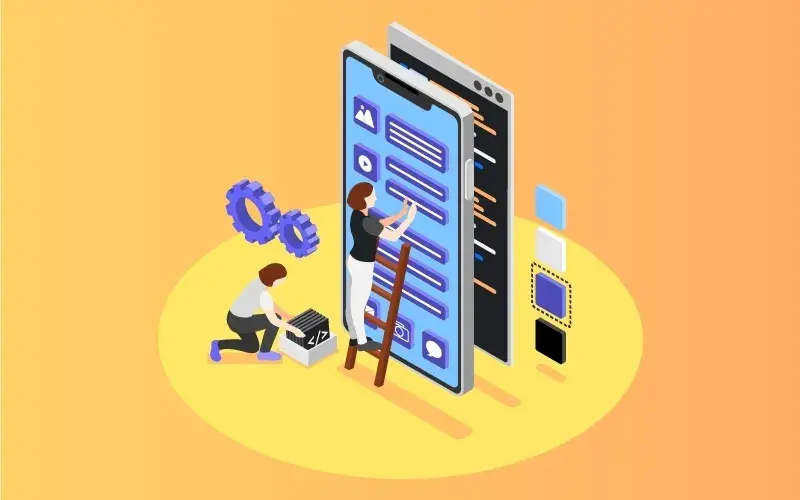What exactly is a design system? A design system is a set of reusable functional elements–components and patterns–guided by defined standards that product teams apply to create a consistent experience across a range of products. Furthermore, design systems are frequently referred to as the “single source of truth.”
This is because they assist internal teams working on shared tasks in adhering to standards or guidelines. This is accomplished by combining elements, components, and patterns to provide a consistent user experience. It also enables teams to scale their offerings efficiently. As a result, design systems can save couples a significant amount of time.
A Design System: Why Use One?
When properly implemented, design systems can offer a design team many advantages, including the following:
-
Speed
You can quickly create new tools and content with a design system without constantly reinventing the user interface (UI). Your results will look and function consistently, and most importantly, they will offer a great customer experience.
Multiple screen sizes present a constant challenge for UX designers. Maintaining speed in your design process depends on having the technology to adapt to any screen size without affecting the positioning or integrity of design elements.
-
Design at Scale
To work at scale, you must have access to a single source of design truth. This assures you that you use the most current assets in all policies, documents, and asset libraries.
For instance, a developer must put their design ideas into practice when creating a new website. A developer looking at static design files may see a tiny design change as significant or even as developing an entirely new component. However, I can give my developer a more descriptive and comprehensive perspective of my design components. In that case, we will be able to connect the dots more fluidly in the planning process, leaving less opportunity for error.
To ensure that designs function and appear consistently across various devices, browsers, operating systems, and other channels. You’ll also want seamless communication between design assets and code components. Colours, symbols, linear gradients, typefaces, character styles, and imagery, whether stock, creative designs or original photographs, can all be considered design assets.
-
Innovate Consistently
The most advanced design systems link design to a coding foundation and brand rules. Design and engineering components are employed as building blocks, and all of this contributes to consistency.
However, keep in mind that designing is not a one-size-fits-all activity. The design process may impede innovation and creativity if it is relaxed. You still need to be able to modify so that your implementation is more precisely targeted and your communications are consistent.
-
Relieves pressure on design resources so they can concentrate on more significant, challenging issues.
Because basic UI elements are already created and reusable, design resources can be focused on more complicated challenges rather than on changing aesthetic appearance (like information prioritization, workflow optimization, and journey management). This benefit may appear minor when you only build a few screens. Still, it becomes significant when you coordinate the activities of dozens of teams and thousands of displays.
-
Establishes a common language across and among cross-functional teams.
A common language reduces unnecessary design or development time caused by misunderstandings, particularly when design roles change or teams are geographically distant.
-
Guarantees visual consistency across products, channels, and departments.
The absence of an organization-wide design system, particularly when teams work in silos, where each product or channel runs independently of the others, can lead to uneven visual appearance and experiences that appear fragmented or unrelated to the brand. Design systems unite disparate backgrounds to make them aesthetically coherent and seem part of the same ecosystem. They provide a single source of components, patterns, and styles. As an added advantage, the design system may be used to manage any significant visual rebranding or redesigns on a large scale.
-
It can be used as a learning tool and a reference for junior designers and content creators.
Individual contributors who are new to UI design or content development benefit from explicit written usage standards and style guides, which also serve as a reminder to the rest of the contributors.
7 Best Design System Examples
 https://www.freepik.com/free-vector/_26763553.htm
https://www.freepik.com/free-vector/_26763553.htm
- Google Material Design System
- Apple Human Interface Guidelines
- Atlassian Design System
- Uber Design System
- Shopify Design System Polaris
- Mailchimp Design System
- Salesforce Lightning Design System
Are You Looking for the Best Design System?
We can see businesses using a range of strategies through these design systems to guarantee outstanding user experience across all digital products and services.
Design systems are living, constantly evolving systems standardized to aid businesses in scaling their design and development operations. As new design tools and methodologies are introduced, creating space for development and experimentation is critical. Design systems must continue to develop at the same rate as innovation and change, mainly as new technologies (such as voice design, AI, or off-screen interfaces) are used.
With our tremendous experience in the design sector, we at SANMARK are here to assist you with your upcoming project. So get in touch with us immediately to start working on your next project. Explore more detailed insights and expert advice in this article.
Feature image source: https://www.freepik.com/free-vector/_845920.htm
